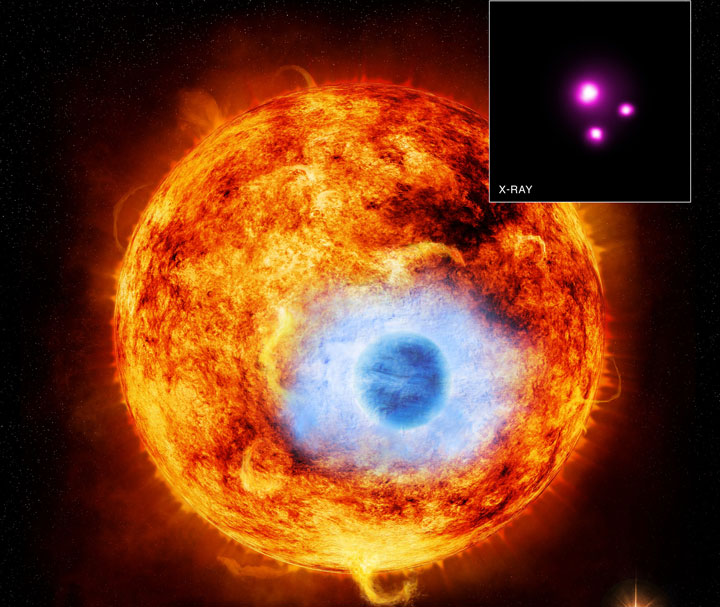TORONTO – Astronomers may already know that planet HD 189733b is blue, but now, using x-rays, astronomers are learning even more about this distant planet.

For the first time since exoplanets were discovered, a telescope has seen a planet transit, or cross in front of, another star in x-rays.
NASA’s Chandra X-Ray Observatory viewed HD 189733b — which lies 63 light-years from Earth along with the European Space Agency’s XMM Newton Observatory — take a dip in x-ray intensity as the planet crossed in front of the star.
Exoplanets are planets which orbit other stars. The first one was discovered almost 20 years ago, and since then, thousands have been detected, with more than 300 confirmed. However, observations of planets transiting other stars have only been conducted in visible light.
“Thousands of planet candidates have been seen to transit in only optical light,” said Katja Poppenhaeger of Harvard-Smithsonian Center for Astrophysics (CfA) in Cambridge, Mass., who led a new study to be published in the Aug. 10 edition of The Astrophysical Journal. “Finally being able to study one in x-rays is important because it reveals new information about the properties of an exoplanet.”
With Chandra’s x-ray observations, astronomers gained new insight into the planet’s atmosphere, including how large it is.
The planetary system contains two stars. Authors of the paper estimate that the main star, designated HD 189733, is evaporating the planet’s atmosphere over time — some 100 million to 600 million kg of mass per second.
HD 189733b is a “hot Jupiter,” meaning it is very similar in size to Jupiter, but orbits closely to its star. It is more than 30 times closer to its star than Earth is to the sun and orbits its star once every 2.2 days.


Comments